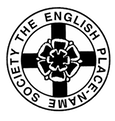Lastingham
Major Settlement in the Parish of Lastingham
Historical Forms
- læstingaeu, lestinga eu, laestingaeu, laestenga eu (ig), læstingæ, læstinga æi, lęstinga ei 8 Bede
- Læstinga ea 10 BedeOE
- Lestingaheu, Lestingaea c.1130 SD
- Lestingay 12 Dugdi.343
- Lesting(e)ham 1086 DB
- Lestingham, Lestyngham 1086–9 MaryH1 1665 Visit
- Laystyngham 1285 KI
- Lastingham, Lastyngham 1393 Test 1396 Pap 1508 Test
Etymology
Ekwall (PN in -ing 148) supposes that there was an OE personal name equivalent to the ON by-name Leistr (LindBN); this would be a name Lāst , which in the -ing forms might be mutated to OE Lǣsting -. Lastingham, therefore, means 'the settlement of the Lǣstingas (or of Lāst and his dependants).'v. ing , ham .
The explanation of the two forms eu and ig in the suffix of Bede's forms seems to be this: the PrGerm nominative was *auhwi and the oblique cases were formed with *auhwj -.Apparently eu comes from the PrGerm nominative *auhwi and ig from the PrGerm oblique *auhwj -. OE ei , æi are for eg , another Anglian form from the PrGerm oblique *auhwj -.There can be no doubt that these are different forms for the same word, for eu is regularly translated by Bede as insula 'island' in such names as Heroteu . The site of the abbey at Lastingham is on the west bank of the river on a piece of land round which Hole Beck flows. v. eg .
The form ea in the OEBede is probably due to confusion, since OE ēa 'a river' (from PrGerm *ahwa , cf. Latin aqua ) can hardly have had such a form as eu .

